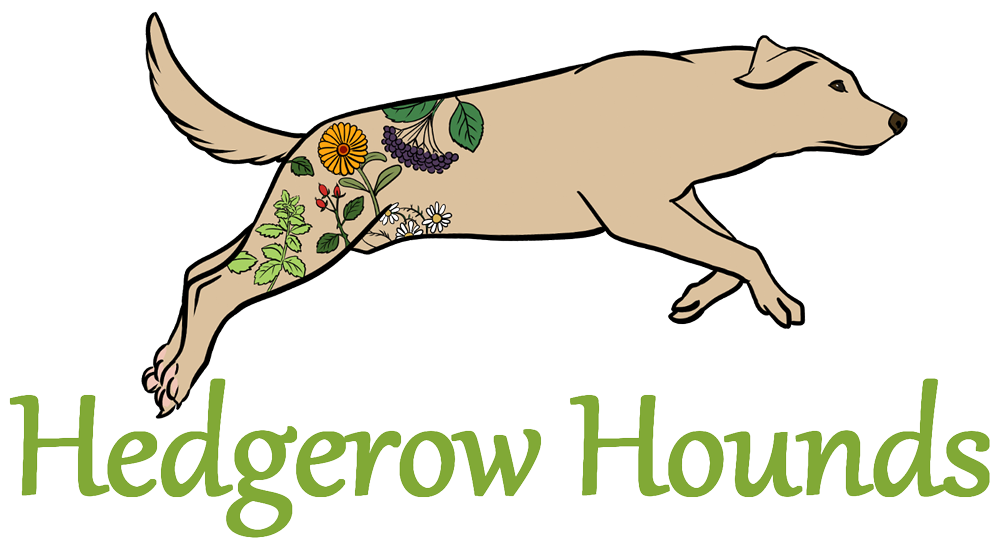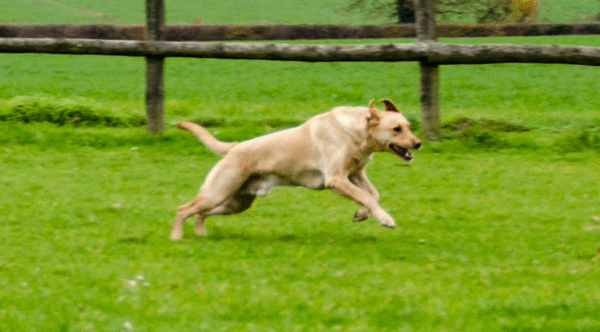Whether dogs are carnivores or omnivores seems to spark many a passionate debate.
All their anatomical attributes point to them being facultative (scavenging) carnivores. Which in general terms means that they are predominately meat eaters but they can, if needed survive on plant matter.
One way to explore what our dogs are designed to eat is to look at their anatomical and physiological features and what nature has given them in order to survive to the best of their abilities.
Dogs come in a vast array of shapes, sizes and specific breed types but basically their anatomy and how their bodies work has barely changed over thousands of years.
The natural wild survival and behavioural traits may have lessened over the centuries but there are still many attributes that our pet dogs have in common with their distant ancestors.
Scenting ability
Nature has given the dog the most exceptional sense of smell for a very good reason. Dogs dedicate 33% of their brain for the very important task of following a scent, which is essential if you need to track and kill your own dinner or seek out something tasty to scavenge.
Their ability to recognise a scent is exceptionable and with 300 million olfactory receptors compared to our 5 million they are in a different league to most other mammals when it comes to scenting ability.
A dog can quickly use his nose to gain lots of information about his environment and also to detect species that have travelled through the surrounding area. They also have the physique to run at speed with their nose a matter of centimetres from the ground and to follow a scent over many miles, even when the “prey” has long since passed by.
Dew Claws
Dogs have a pointed dew claw on the inner aspect of their front legs which does not come into contact with the ground until they are moving through the faster paces, then it provides a very important role.
Many people think that dew claws have no purpose, but if you have ever observed a dog eating a raw bone you will see that they dig the dew claw into the meat or sinew to position and prevent movement of the bone while eating.
Dew claws also have a vital role in stabilising the lower leg and in particular when cornering at speed, as there are five tendon attachments coming off it leading to muscles that prevent twisting of the limb when it comes into contact with the ground. This can prove essential in injury prevention when travelling over uneven terrain at high speed, such as the chasing of prey or needing to flee a source of danger.
Head
Carnivores have very big jaws in relation to the size of their heads. Although they have reduced facial muscles to allow for the opening of the mouth, the primary muscles that operate the jaws are the large, developed temporalis muscle on their skull and combined with powerful neck and shoulder muscles, overpower, hold prey , crush bones and have the strength to carry away items that have been scavenged so they can be eaten in a safe environment.
Teeth
The teeth of the dog are probably the biggest clue as to what canines are designed to eat. Like a Swiss army knife, each group of teeth have a very specific job to do in order to deal with capturing, puncturing and devouring almost a whole carcass. None of the structure or function of the dogs teeth and jaws lend themselves to eating or grinding cereals.
Incisors are the small teeth at the front of the mouth, they are used to nibble and strip away sinew and meat from the bone.
Canine teeth also referred to as fangs or cuspids are the long pointed teeth used for holding and puncturing flesh. There are two canines in the upper jaw (maxilla) and two in the lower jaw (mandible). They are single rooted teeth and the upper canine tends to be longer and more pointed than the lower.
Premolars are designed to crush and slice due to their uneven surface and scissor like action. There is a modified molar called a Carnassial which you will see as the largest and most jagged premolar. It has three roots and is a heavy-duty tool to crush bones and meat. A dog will often tilt their head to one side to gain full use of this tooth when gnawing on a bone or to slice through a large chunk of meat for easier swallowing. The top jaw has two molars each side and the bottom jaw has three which are used for crushing.
Mouth
Dogs do not have any side to side action in their jaws so unlike ourselves or herbivores they can’t grind their food before swallowing. Their jaw is a simple hinge joint and has a chomping up and down movement and a strong, muscular tongue which can manipulate food to where it can be crushed by the powerful jaws.
They do not possess any salivary amylase, which is a specialised digestive enzyme that herbivores and omnivores produce in their mouth and together with the chewing and grinding action of the molars starts to immediately break down starchy carbohydrates before we even swallow.
The oesophagus is capable of allowing the passage of large pieces of meat, after all the dog isn't capable of breaking the meat down by chewing or salivary amylase, so it needs to get the food to where that can happen, which is in the stomach.
Stomach and Digestive tract
Dogs have a short digestive tract so they can expel waste quickly which is particularly important if they have been eating food that is covered in bacteria.
We have all seen dogs eat the most disgusting and decaying of items, which if eaten by ourselves would have us omitted to hospital, yet at worst they may have a slight upset tummy for 24 hours.
They have an incredibly strong stomach acid of around pH1 which is needed to break down large amounts of protein, to dissolve bone and as a protection against any decaying food that may have been scavenged. The walls of their stomach are covered in a thick mucosa to provide protection from the corrosive acid and to literally stop the stomach from digesting itself.
Dogs produce amylase in their pancreas which is passed into the blood stream to assist in digesting carbohydrates.
All the leading dog food companies state that dogs have no nutritional need for carbohydrates in their diet, yet they appear in very large amounts in the majority of processed foods.
Recent studies have shown that there has been some adaptation over the years in dogs’ ability to digest starch. One study comparing wolves to our domestic dogs showed that dogs of today had between 4 – 30 copies of a gene code for amylase while wolves had 2 copies. This shows that dogs may now find it easier to digest carbohydrates, but with such a large gap between 4 and 30 copies it also shows that some dogs will not thrive as well as others on a high carbohydrate diet. It comes back to the importance of treating a dog as an individual and just like ourselves, what is ideal for one person can be very detrimental to the health of another.
Behaviour traits
Dogs still exhibit some of the behaviour traits of their ancestors and in certain breeds this will be particularly noticeable.
Man has taken full advantage of these natural behaviours and over many hundreds of years, through selective breeding have created companions to work alongside them. This can be anything from using their natural herding instinct to manage sheep, tracking and bringing down prey to feed the owners family and retrieving shot game.
Many dogs are keen diggers and will bury food and in particular bones as if storing them for a time when food is scarce.
Heightened senses and prey drive
All their senses are heightened, eyesight, hearing and in particular sense of smell so they can continually analyse who is approachable and where any potential food source may be.
This strong prey drive is still noticeable today in the gundog, terrier and hound groups who are just primed to follow a scent or in the case of sight hounds to chase sudden movement.



